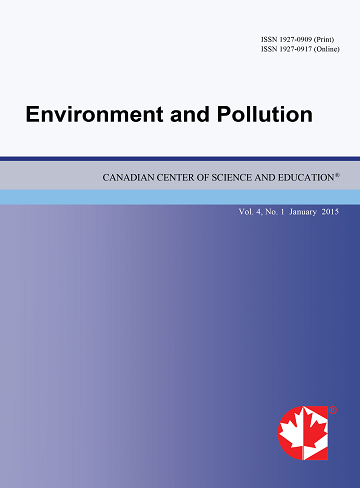Evaluation of Trace Metal Contamination in Ise Bay, Mie Prefecture, Central Japan, Based on Geochemical Analysis of Tidal Flat Sediments
- Ibrahima Diallo
- Hiroaki Ishiga
Abstract
Geochemical analysis of tidal flat sediments was conducted to evaluate the environment of Ise Bay, Mie, central Japan. The sediment samples were analyzed using XRF to determine the geochemical compositions of sediments in the Ise and Matsusaka estuaries and their foreshores. Enrichment Factor (EF) and the Anthropogenic Contribution (AC) parameters were used to examine the potential effect of human activity. Furthermore, the Coastal Ocean Sediment Database, lowest and severe effect levels and Canadian Sediment Quality Guidelines were applied as benchmarks to assess the sediment quality. The results show that the highest average concentrations of metals occur in the Ise estuary, mainly due to the presence of higher proportions of silt and clay in samples at that site. The EFs of Pb in the Matsusaka foreshore, and that of As in the Ise foreshore reflect minimal pollution. The average AC ranged from 1 to 30%, implying that the lithology is the primary control of any enrichment in trace metals within the bay. The sediment quality guidelines indicate that the metal levels in the study areas do not constitute a major threat to biota.- Full Text:
 PDF
PDF
- DOI:10.5539/ep.v5n1p92
Journal Metrics
h-index (2017): 10
i10-index (2017): 11
h5-index (2017): 9
h5-median (2017): 15
Index
- Academic Journals Database
- Berkeley Library
- CAB Abstracts
- CAS (American Chemical Society)
- CNKI Scholar
- COPAC
- CrossRef
- DTU Library
- Elektronische Zeitschriftenbibliothek (EZB)
- EuroPub Database
- Excellence in Research for Australia (ERA)
- Genamics JournalSeek
- Google Scholar
- Harvard Library
- Infotrieve
- Jisc Library Hub Discover
- JournalGuide
- JournalTOCs
- LOCKSS
- Max Planck Institutes
- Mir@bel
- PKP Open Archives Harvester
- Pollution Abstracts
- Publons
- Pubmed journal list
- ROAD
- Scilit
- SHERPA/RoMEO
- Standard Periodical Directory
- Stanford Libraries
- UCR Library
- Ulrich's
- UniCat
- Universe Digital Library
- UoS Library
- WorldCat
- Zeitschriften Daten Bank (ZDB)
Contact
- Albert JohnEditorial Assistant
- ep@ccsenet.org
